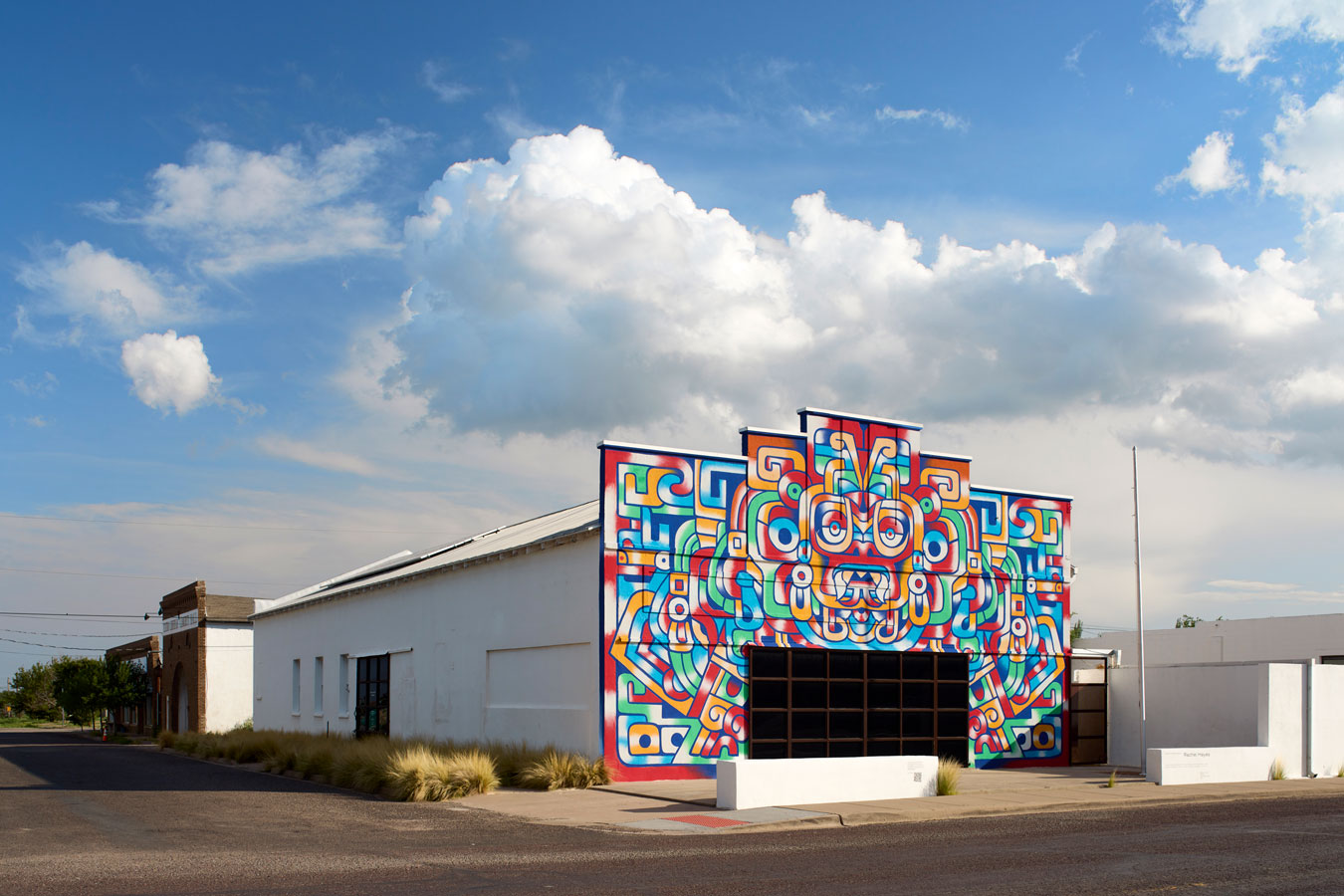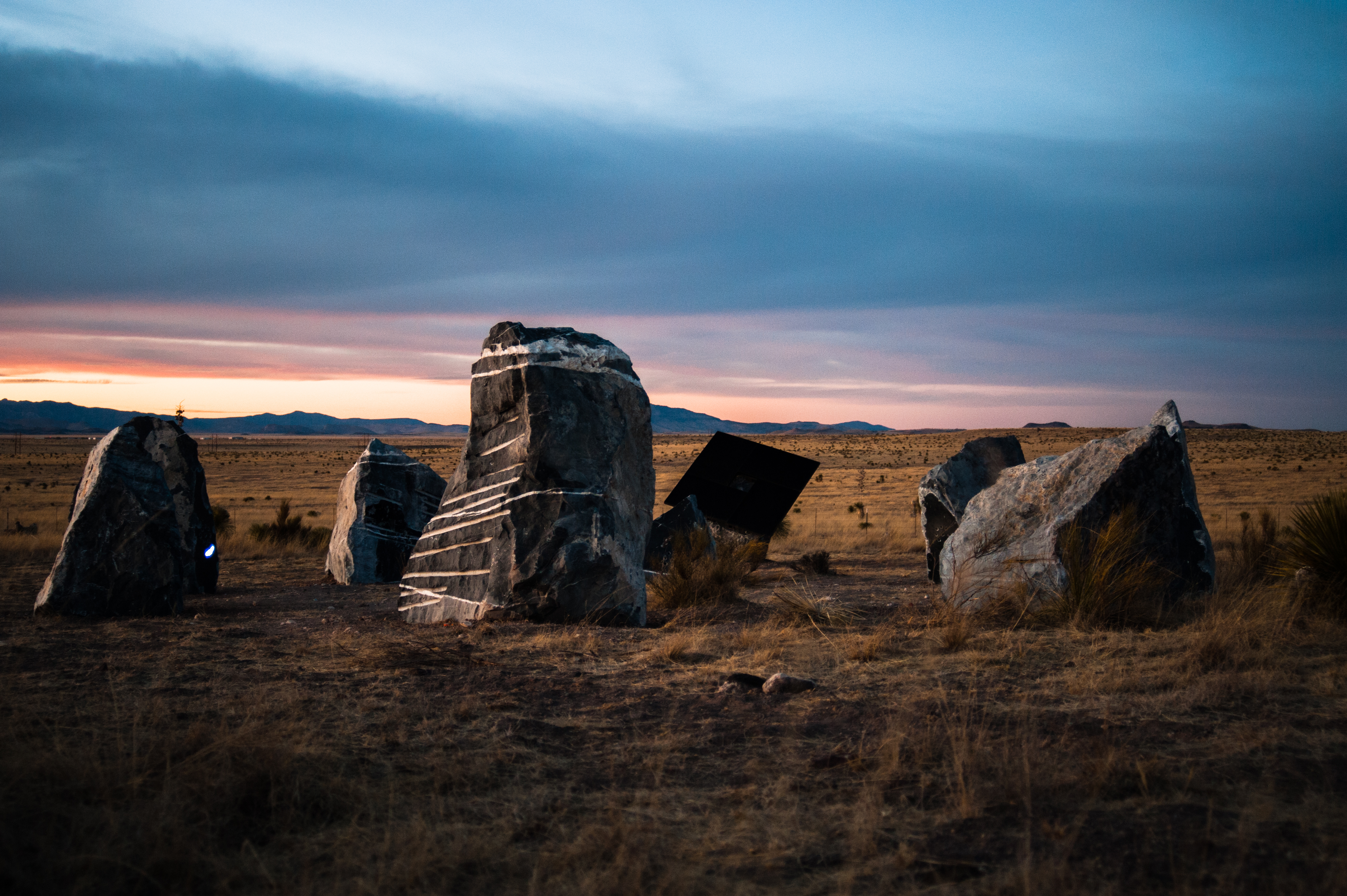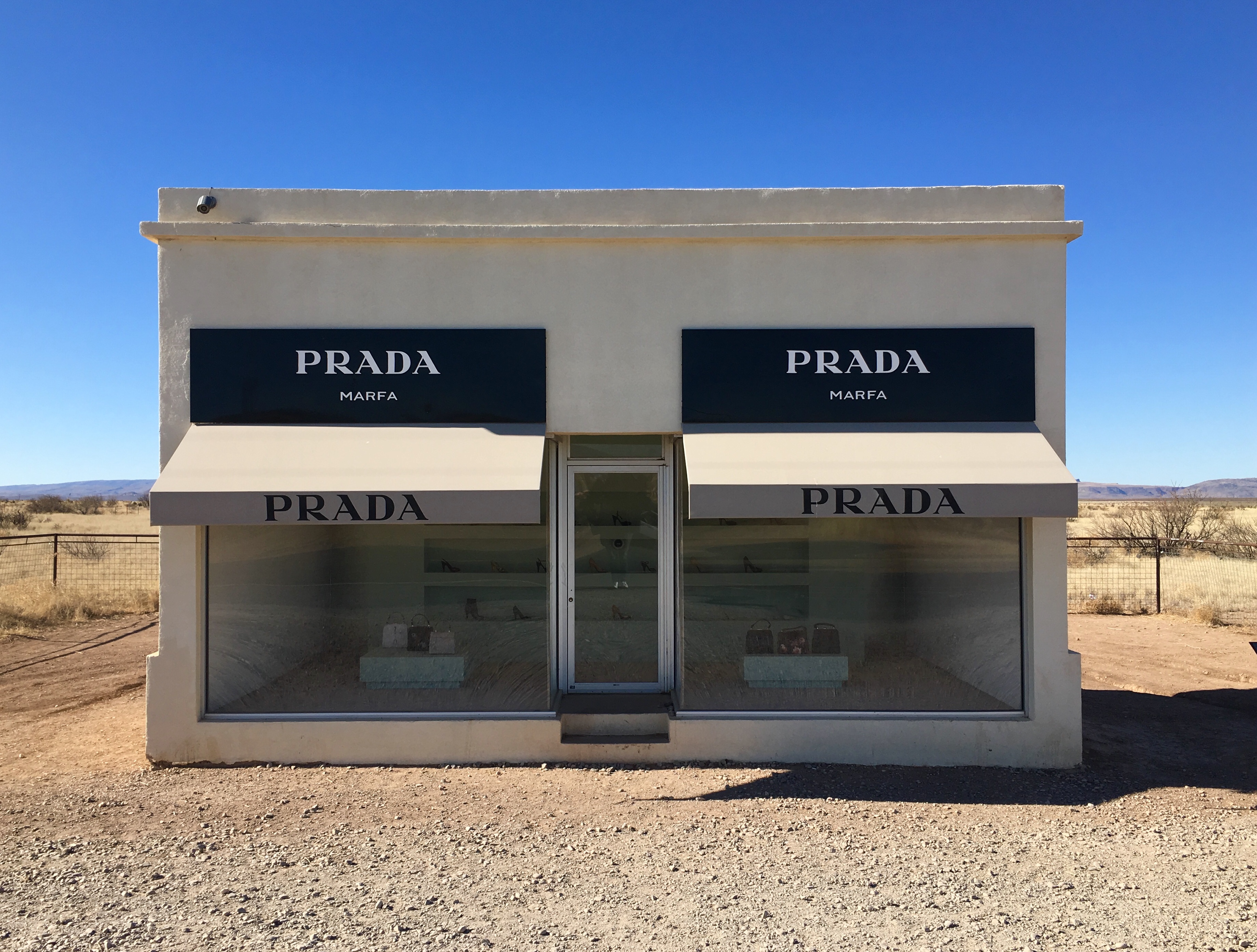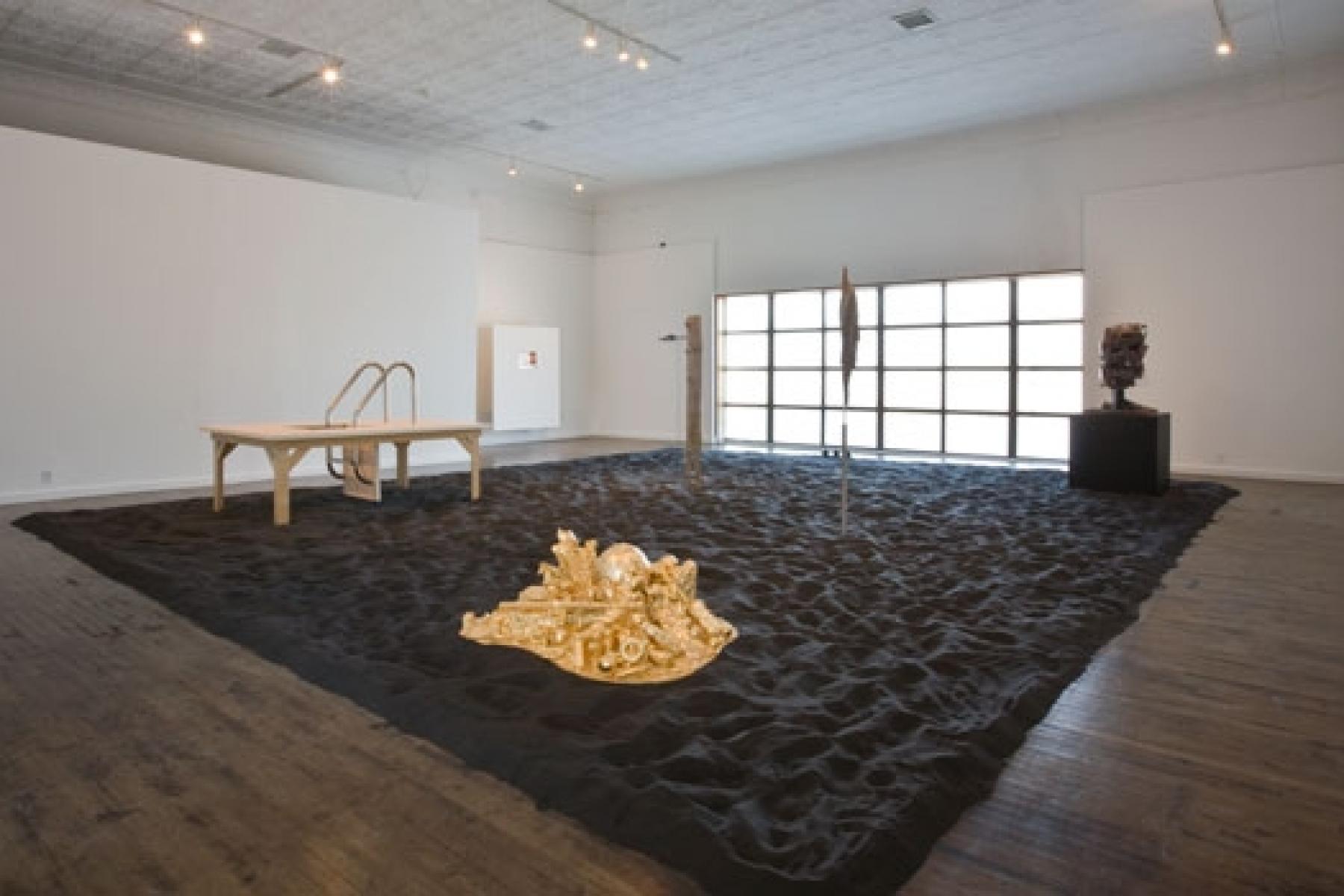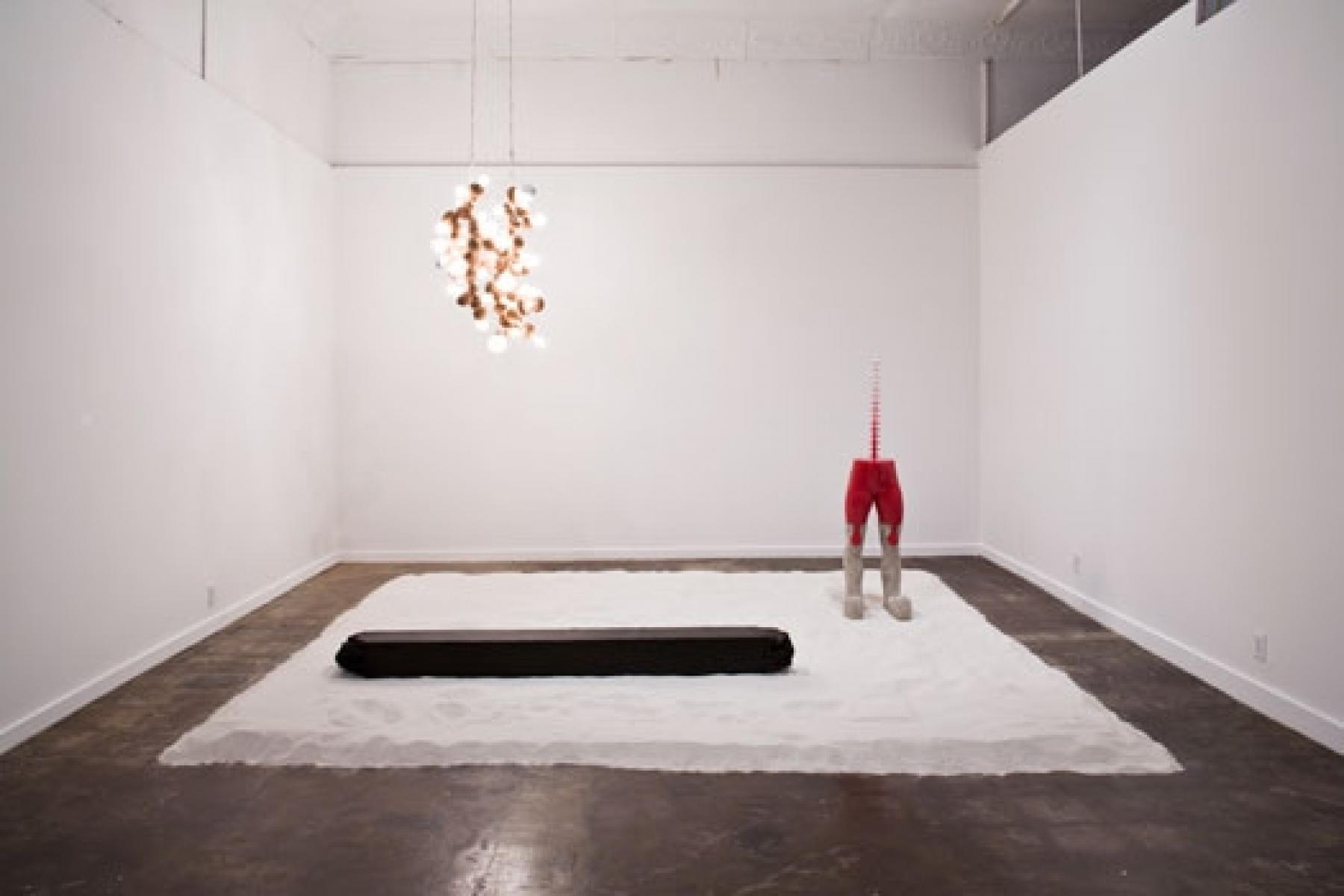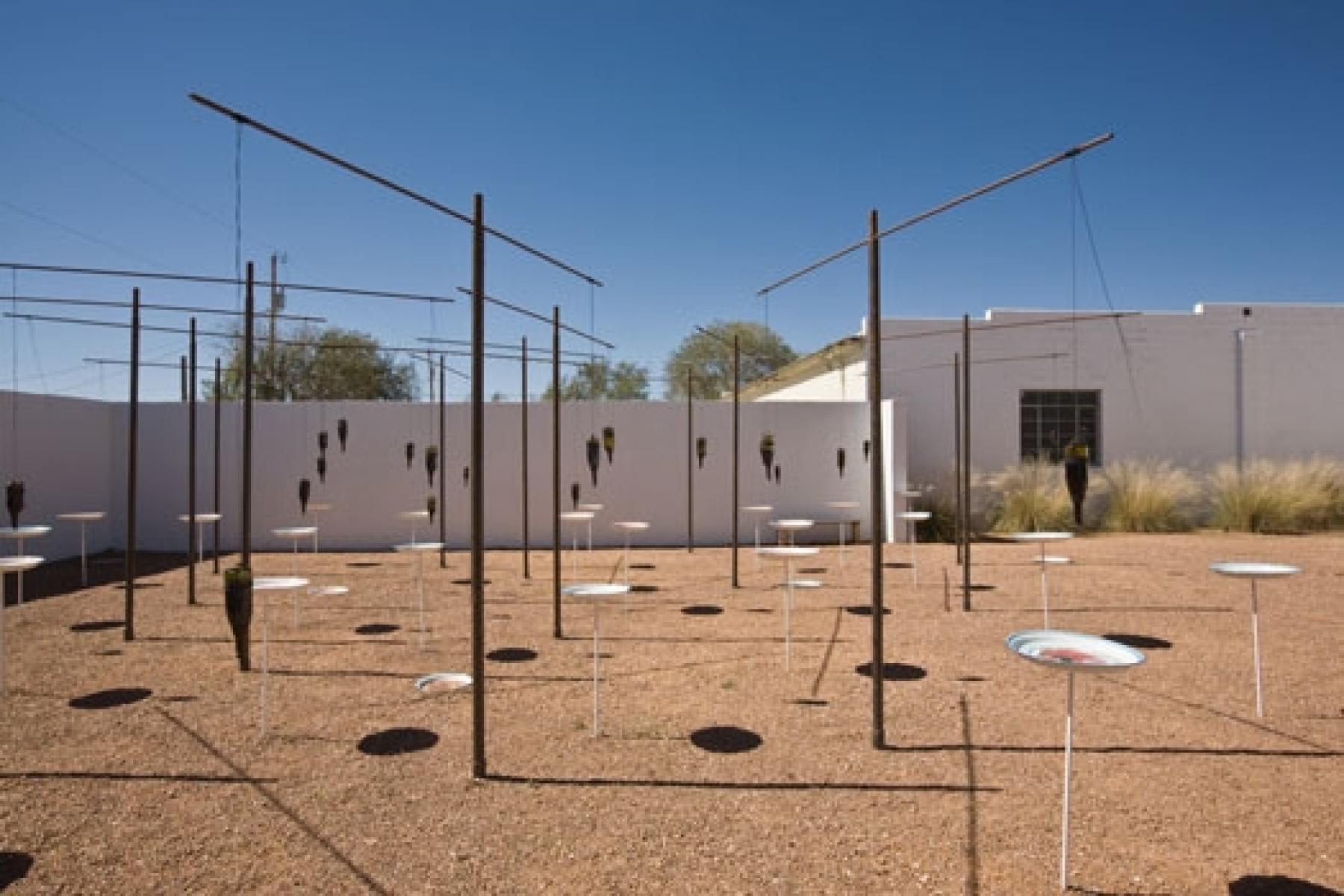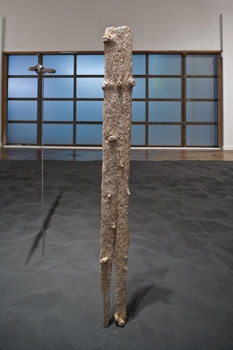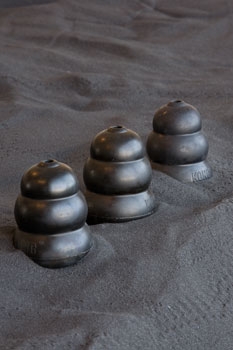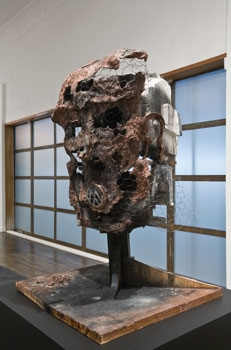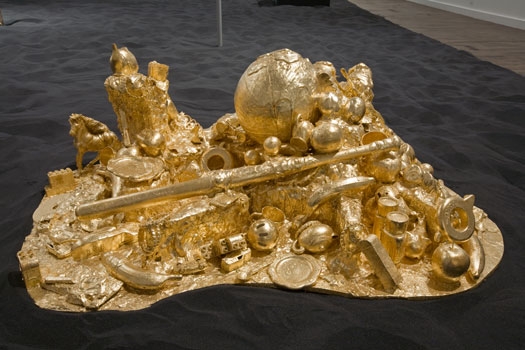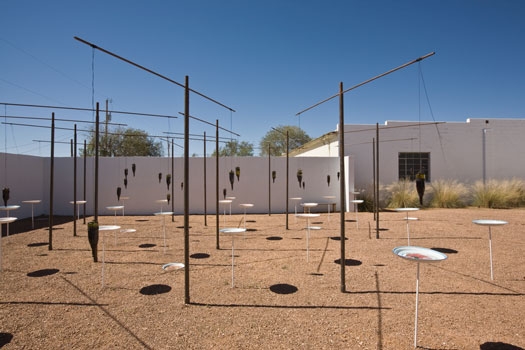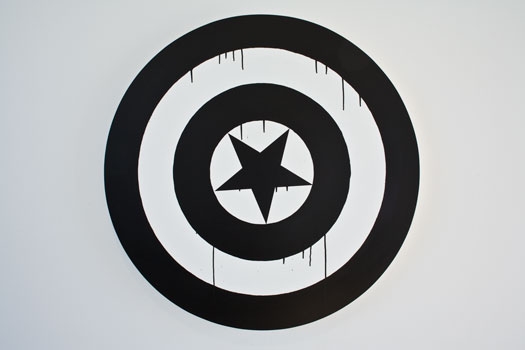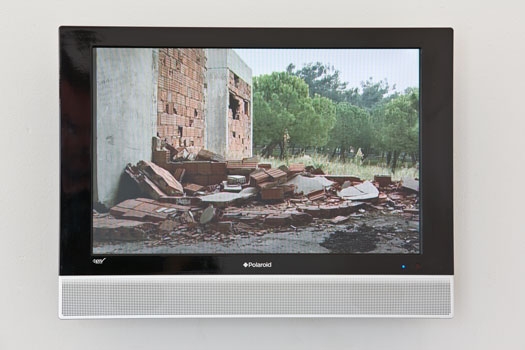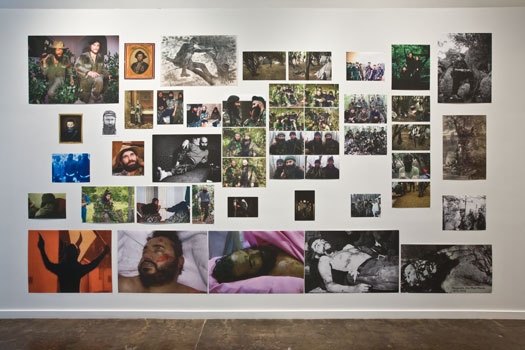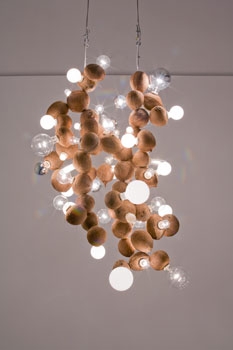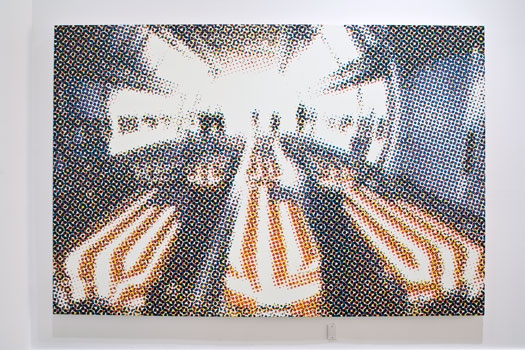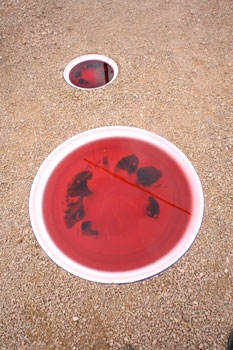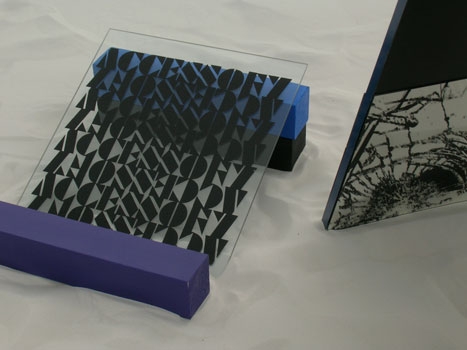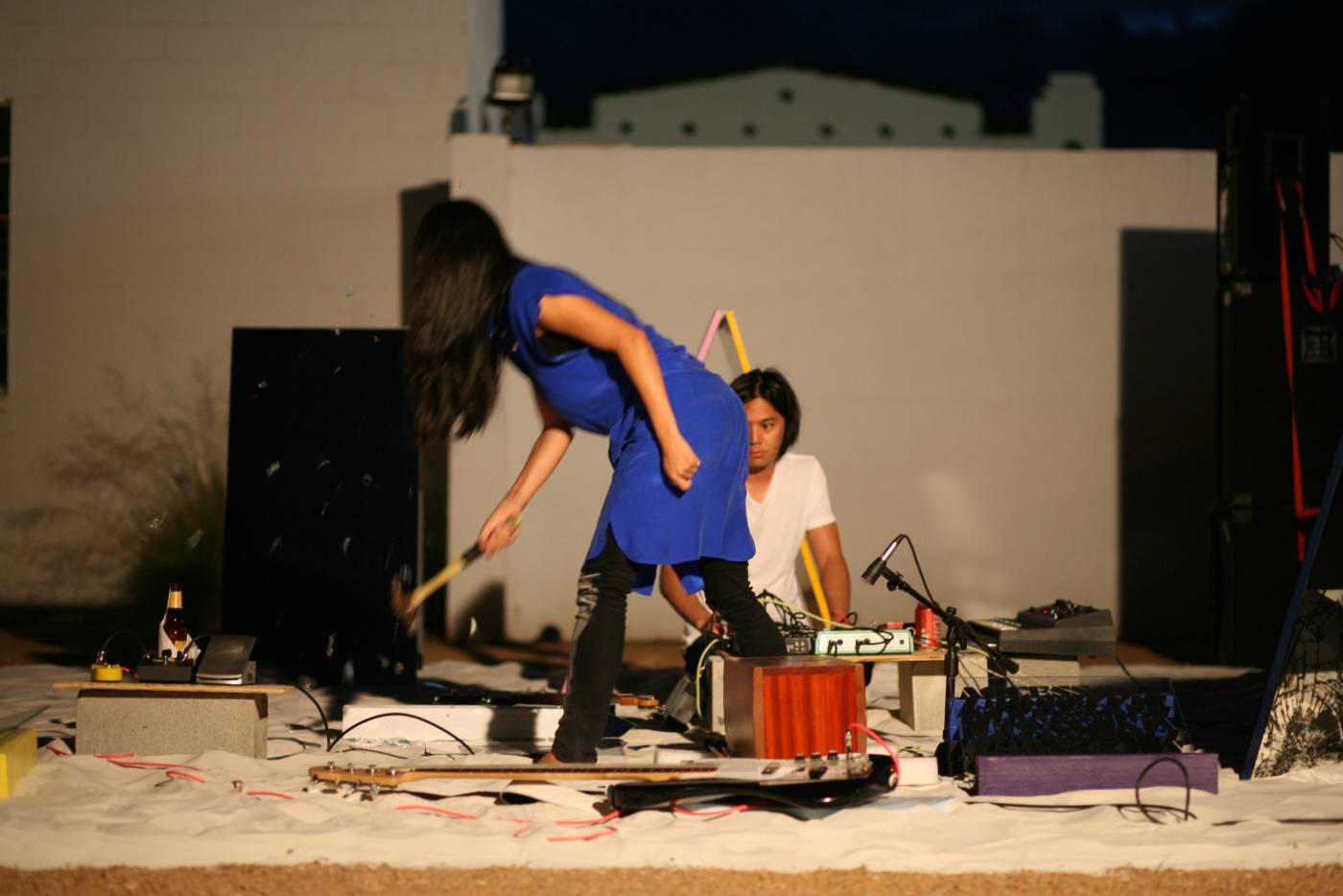
Exhibition
Barry X Ball | Huma Bhabha | Carol Bove | Trisha Donnelly | Gardar Eide Einarsson | Jason Fox | Wayne Gonzales | Robert Grosvenor | Guyton\Walker | Adam Helms | Corey McCorkle | Wangechi Mutu | John Miller | Haim Steinbach | Mika Tajima/New Humans | Joan Wallace
Every Revolution Is a Roll of the Dice was is an exhibition of sculptural objects that, by way of their presentation, can be seen as actors on a stage. The floor of the main gallery was covered with a thin layer of black volcanic sand and the floor of the second gallery will be covered with white sand. All free-standing objects were placed in the sand. Viewers walked around the perimeter of a desert/desert island. The objects appeared to them as stranded, as castaways. This staging called to mind the poignancy and absurdity of a Samuel Beckett play.
The gallery became a landscape in which various objects, particularly figurative objects, are isolated in small groupings to create a heightened sense of interaction between them. A marble head by Barry X Ball and an unfired clay head by Huma Bhabha, for example, may seem to be looking together at Joan Wallace’s “Pool Ladder Painting 2” — a large table-top work that has a trap door through which an aluminum pool ladder has been placed. Each piece activated the other. The trap door in the table top can be seen as referring to the trap doors of a stage and a gallows. The works by Barry X Ball and Huma Bhabha both represent a scarred or wounded head: the exposed chicken wire in Huma Bhabha’s work is skeletal, as if part of the head has been blown away; the cracks and fissures in the stone in Barry X Ball’s work can be read as scars or head wounds.
This was just one example of how in this exhibition the poetical/political readings of various works was brought to the fore, and how by way of a theatrical staging they activated each other and the space in which they are seen.
The title of the show was taken from the title of a short film made by Jean-Marie Straub and Danièle Huillet in 1978. The text of the film is based entirely on the Stéphane Mallarmé poem , A Roll of the Dice Will Never Abolish Chance, published in 1897, the year before his death. The film, shot in Père Lachaise cemetery in Paris, near the graves of the Communards of 1871, is structurally built around the textual and graphic elements of the poem.
The works in this show, many of which were made expressly for this exhibition, were meant to be read as symbolic objects, conveying through association and interaction a sense of a troubled but not hopeless world. This is, after all, a world in which artists continue to give form to the bigger questions – to life and death – and to create objects that are as beautiful as they are poignant.
The thirteen artists and two artists’ collaboratives in Every Revolution Is a Roll of the Dice all live and work in New York city, having moved there from diverse locations in the United States, Europe, Scandinavia, the Middle East, Africa and Asia: Barry X Ball (Pasadena, CA); Huma Bhabha (Karachi, Pakistan); Carol Bove (Geneva, Switzerland); Trisha Donnelly (San Francisco, CA); Gardar Eide Einarsson (Oslo, Norway); Jason Fox (Yonkers, NY); Wayne Gonzales (New Orleans, LA); Robert Grosvenor (New York, NY); Guyton\Walker (Hammond, IN\Columbus, GA); Adam Helms (Tucson, AZ); Corey McCorkle (La Crosse, WI); Wangechi Mutu (Nairobi, Kenya); John Miller (Cleveland, OH); Haim Steinbach (Rehovot, Israel); Mika Tajima/New Humans (Los Angeles, CA); and Joan Wallace (New York).
Mika Tajima and her band, New Humans, performed in Ballroom Marfa’s outdoor courtyard on opening night, with band and instruments on a white- sand stage.
Every Revolution Is A Roll of the Dice was organized by Bob Nickas, a New York based critic and freelance curator who has realized an extraordinary number of exhibitions for galleries and museums in the United States and Europe since the mid 1980s. He was curatorial advisor at P.S.1 Contemporary Art Center, New York between 2004 and 2007, and his writing has appeared in numerous publications including Artforum, Afterall and Index. He has authored several books — Theft Is Vision (forthcoming, 2007), Collection Diary (2005), and Live Free or Die: Collected Writings 1985-1999 (2000) are three examples — and has contributed to many catalogues and monographs on artists, among them Gert and Uwe Tobias, Jules de Balincourt, Peter Hujar, Yayoi Kusama, Louise Lawler, Felix Gonzalez-Torres, and Cady Noland.
